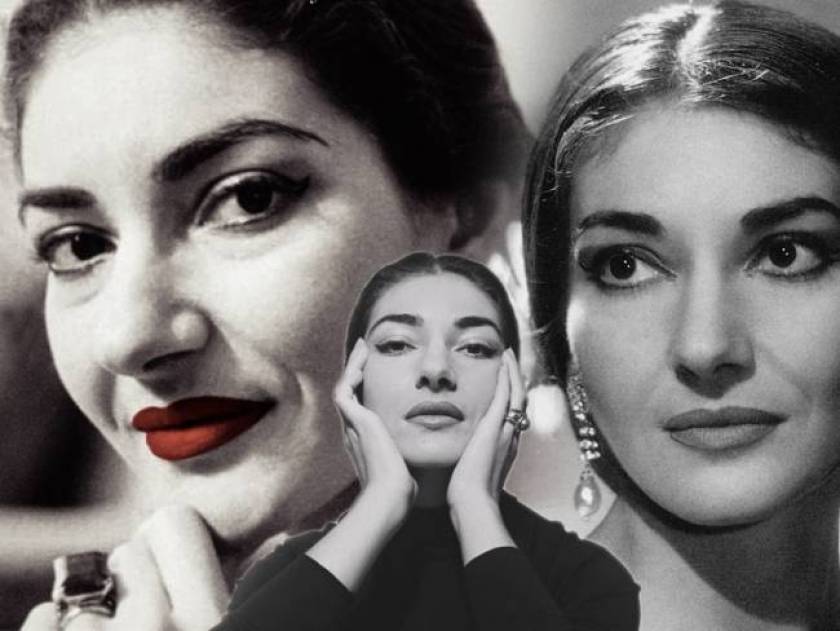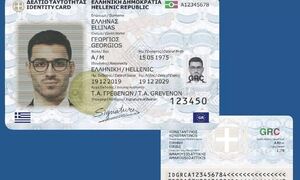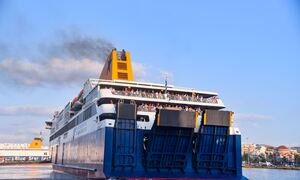37 years without Maria Callas

She was adorable, superb, and enviable. Her star shone on the stage of the opera. Her voice was heard in every corner of the earth. Her end was sad, though. Maria Callas, who became famous around the world, died leaving behind her stunning performances and a great passionate love, which marked her life and career. She was gone ... like today, nearly four decades ago.
Maria Anna Sofia Cecilia Kalogeropoulos, as was her real name, died at the age of 54 years, on September 16, 1977.
She was born in New York City on December 2, 1923. Her house in the center of Athens, where she spent her childhood, neoclassical building on Patision 61 and Scaramanga Street, now belongs to NAT. It was a project of the architect Costas Kitsikis, an ornament for its time, but today is left to the abandonment of the time. The restoration was considered by the government unprofitable and expensive ... and the tourists coming to Greece are wondering "why".
Her "star" was bright
Every soprano would like at the beginning of her career to have the best manager in the world.
Menegchini, was the most powerful man on the planet in staffing opera artists and successful industrialist.
Maria Callas had the good fortune to marry him.
Her marriage to Giovanni Battista Menegkini, takes place on 21 April 1949. Menegkini had catalytic influence on the career of Maria Callas, subjecting her in diet in order to gain better presence on stage, while he provided financial coverage to her.
Soon Callas enters the "arena" of the opera, making global appearances.
Her beginning is impressive ... but her passionate love with Aristotle Onassis, proved disastrous.
The beginning of a great career
In her first audition with Edward Johnson, Director of the Opera, he suggests her to perform the only opera composed by Beethoven, "Fidelio" and the "Madame Butterfly" by Puccini.
Callas does not want to sing the "Fidelio" in English, while feeling very burly to perform the subtle "Butterfly."
Her acquaintance with the artistic director of the Arena of Verona, Giovanni Tzenatello leads her to Italy.
There on August 3, 1947 makes its first appearance in the Arena of Verona with the "Mona Lisa" by Amilcar Ponkieli. That same year she performed Isolde in "Tristan and Isolde" in Venice under the direction of Maestro Serafin Toulios.
The stages of glorification
On December 7, 1951 Callas opened the season at La Scala with the "Sicilian Vespers", and becomes widely known.
Italy and La Scala in Milan is her "charm". It is the theater of her greatest triumphs.
1955 brings the historical performance of "La Traviata" by Verdi, directed by Luchino Visconti.
On October 27, 1956 first appeared at the Metropolitan Opera in New York as "Norma" in the homonymous work of Bellini.
On August 5, 1957, returned to Athens and sings at the Odeon of Herodes Atticus at the Athens Festival. Two months ago she had met the shipping magnate Aristotle Onassis at a reception of Elsa Maxwell.
In 1960 sings "Norma"at the Ancient Theatre of Epidaurus and next year "Medea", directed by Alexis Minotis.
In 1962 he returned to La Scala and glorified as Medea, directed by Alexis Minotis and with costumes of Tsarouchis. In January 1964, she was convinced by Franco Zeffirelli to take part in a new production of "Tosca" at the scene of Covent Garden. The show is praised by critics, while followed the same year a new artistic triumph at the Paris Opera with "Norma".
Despite her vocal problems, the audience welcomes her.
On July 5, 1965 appears for the last time in opera at Covent Garden in "Tosca" directed by Franco Zeffirelli.
The depression
In 1966, she formally solved her marriage to Meneghini. She hopes that Aristotle Onassis would ask her to marry him.
But on July 8, 1968 he married the widow of American President Kennedy, Jackie. Here begins the destruction of her life and career.
Last scenes before the end
Opera can no longer "tolerate" her. She decides to accept the offer to appear on the big screen. In 1969 she played to the movie "Medea" by Euripides, directed by Pier Paolo Pasolini. But the film never went to theaters. On May 25, 1970, she made a suicide attempt with a large dose of barbiturates. They managed to keep her alive.
Three years later, in 1973 she directed with Giuseppe di Stefano, in Turin, the work "Sicilian Vespers" (I Vespri Siciliani) and the same year makes with him a world artistic tour. On December 8 Callas sang at the Paris Opera, where the audience invited her on stage 10 times. Her last performance was in Sapporo, Japan on December 11, 1974.
Her ashes were scattered in the Aegean
Maria Callas passed into eternity on September 16, 1977 in Paris. The funeral took place on 20 September and, after her body was cremated as she desired, the spring of 1979 her ashes were scattered in the Aegean.
New evidence
In 2010, an Italian research overturns the presumption that the popular soprano died of high dose of barbiturates (due to her painful relationship with Aristotle Onassis).
According to the Italian voice doctors Franco Fousi and Nick Paolilo, who presented the results of their study at the University of Bologna, the singer suffered from dermatomyositis, a degenerative disease that impairs the muscles and tissues, including the larynx.
This seems to explain the continuous decline of the greatness of her voice, which was beginning to be felt since the early 60s.
According to a medical report, the death of Maria Callas on September 16, 1977 was due to cardiac arrest.
As explained by two Italian scientists, the treatment for dermatomyositis is based on cortisone and immunosuppressive therapy, which is likely to lead to heart failure gradually.
Therefore, Fousi and Paolillo agree with the official medical report, only pointing out that the heart arrest was not coincidence, but the result of degenerative gravis.
Starting point for the Italian research were the recordings of the famous soprano, both from the studio and live performances.
With the method of spectral analysis, scientists examined the recordings of the same songs from different periods and found alterations in the voice of the artist, who in the late 70s became a mezzo soprano.
The two doctors, also analyzed the last video of Callas, in which was evident the muscle relaxation, since there was no thorax distention during respiration.
This study comes to shed new and probably decisive light in the diagnosis of dermatomyositis, which was formed by Dr Mario Tzakovatso, who had visited the singer in 1975, but had kept the diagnosis secret until 2002.
Movies about Callas
E la nave va, 1983 (And the Ship Sails On), directed by Federico Fellini
Callas Forever, 2002, directed by Franco Zeffirelli and Fanny Ardan as Callas.
The big secret
In the documentary film "Absolute Callas" by French director Philippe Collie, based on historical records, is revealed a secret aspect of the life of the great "diva".
It is revealed that Maria Callas on March 30, 1960 gave birth to a dead male baby, which was allegedly as the result of her love with Aristotle Onassis.
Collie claims that he has verified this unfortunate incident, with the birth certificate stating the name of Homer, but with "unreadable" last name. He also claimed to have photos of the cemetery Brescia in Milan where, allegedly, buried the newborn in "secrecy".
Scholarships Maria Callas
In 1960 and 1961, Maria Callas gave its revenues from performances at Epidaurus for the establishment of an institution that would provide scholarships for young artists. The Institution of the Scholarships Maria Callas was established and organized the first competition in 1963.













